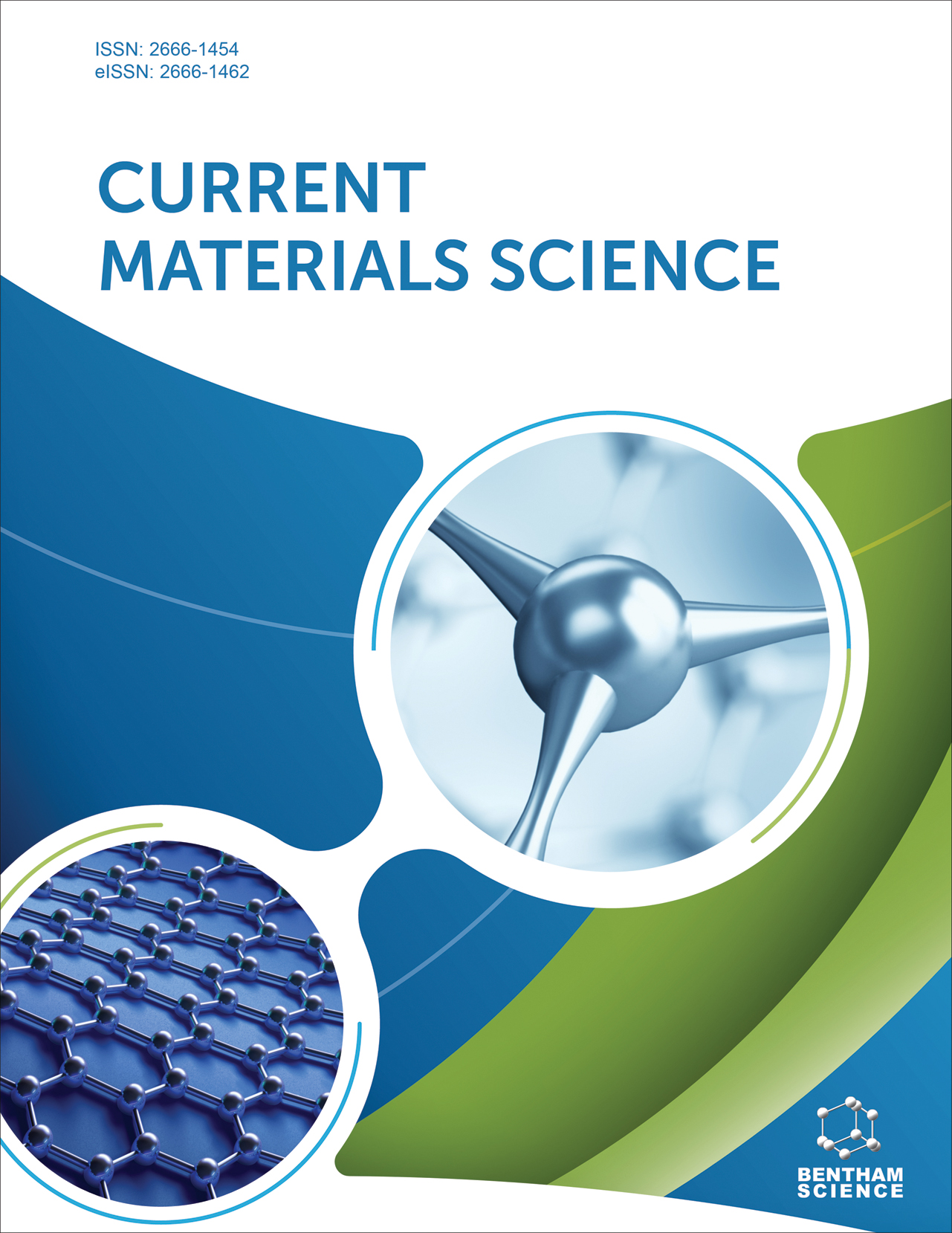- Home
- A-Z Publications
- Current Materials Science
- Previous Issues
- Volume 12, Issue 2, 2019
Current Materials Science - Volume 12, Issue 2, 2019
Volume 12, Issue 2, 2019
-
-
Following Carbon Dioxide Concentration and Consequences of its Zero Emission on the Environmental Ecosystem
More LessBackground: This research aims to follow the concentration of carbon dioxide (CO2) in the atmosphere and the effect of zero-emission on the ecosystem. CO2 is the most important of the green house gases. Nowadays, the earth is suffering from global warming due to greenhouse gases. The call all over the world is to reduce the emission of the greenhouse gases, mainly CO2. Methods: The research methodology depends Read More
-
-
-
Grewia asiatica Mucilage: A Smart Gelling Polymeric Material for Pharmaceutical Applications In Vitro Studies
More LessAuthors: Nitin Gupta, Giriraj T. Kulkarni, Pravin Kumar and Rajendra AwasthiBackground: Natural plant-based materials have several advantages. They are biodegradable, biocompatible, non-toxic, cost-effective, environment friendly, easily available, and can undergo chemical modification. Objective: Grewia asiatica extracts contain various phytoconstituents and have therapeutic benefits such as antimicrobial and anti-diabetic properties. They form colloidal dispersions and Read More
-
-
-
Comparative Analysis on the Elastic Behavior of Composite Materials Based on Plant Fibers: Bamboo / Epoxy and Coconut / Epoxy
More LessAuthors: Allel Mokaddem, Bendouma Doumi, Mohammed Belkheir and Amina TouimiBackground: The exploitation by the industries of vegetable fibers in the field of composite materials has made it possible to reduce the dependency of oil which is the result of their mechanical properties, their thermal resistance and biodegradability. Methods: In this work, we carried out a comparative study by a genetic simulation on two materials based on different natural reinforcements (Bamboo and Coconut) to s Read More
-
-
-
Mechanical and Tribological Characterization of Hybrid Natural Fiber Reinforced Composites
More LessAuthors: Hiral H. Parikh, Harshit P. Soni, Deval A. Suthar and Dhruv H. PatelBackground: The technological enhancement in various disciplines enhances the demand for the new material which can replace the conventional materials. This has initiated the idea of composite materials. Synthetic fiber reinforced polymer matrix composites are being widely used due to its mechanical properties, but these fibers lack in terms of biodegradability, initial processing cost, recyclability and health hazard. An alter Read More
-
-
-
Antibacterial and Bioactive Composite Bone Cements
More LessAuthors: Enrica Verné, Filippo Foroni, Giovanni Lucchetta and Marta MiolaBackground: Peri-prosthetic infections are characterized by high resistance to systemic antibiotic therapy. In this work, commercial PMMA-based bone cement has been loaded with a bioactive glass doped with silver ions, with the purpose to prepare composite bone cement containing a single inorganic phase with both bioactive and antibacterial properties, able to prevent bacterial contamination. Methods: The glass distributio Read More
-
-
-
White Light Emission from Pr, Dy Doped ZnSiCa Glass
More LessAuthors: Pingsheng Yu, Wei Guo, Yilu Cheng, Liangbi Su and Jun XuBackground: Luminescence glass is a potential candidate for developing white light emitting diode (W-LED) due to its good rare earth ion solubility, efficient luminescence, easy fabrication and good mold ability. Pr3+ ion has various visible emission bands from blue to red spectral region, and has attracted considerable attention for potential application to LEDs, ultraviolet laser, and scintillator. The Dy3+ ions can exhibit emission in Read More
-
-
-
Effects of Ultraviolet Pretreatment on Pigment Printing of Cotton / Polyester Blend Fabric
More LessIntroduction: Pigments have become the largest colorant group for textile prints because pigment printing is the oldest and cheapest method. Binders are used to fix pigments to the fibers by adhesion. Pigment binders play a significant role in pigment printing because it encloses the pigment particles and adheres to the fiber. Objective: In this study, cotton/polyester blend fabrics were treated with ultraviolet light (UVB Read More
-
Most Read This Month
Article
content/journals/cms
Journal
10
5
false
en


